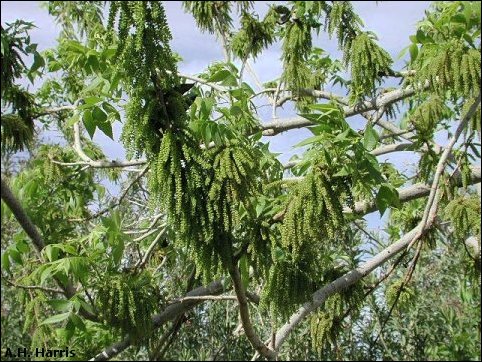
Organisms, humans included, ultimately are self-centered. The exceptions are no longer with us, long since extinct. But being focused on ourselves, we tend to assume that things in nature were made for our benefit. Take flowers, for example. Surely beautiful blooms could only be for our enjoyment! Asked to think about it, though, we understand that flowers are made for the benefit of the plants bearing them, not to please our esthetic tastes.
From the viewpoint of plants, flowers are costly to produce--and the
showy blooms we so enjoy evolved only because they were an efficient way to attract and
encourage pollinators. This becomes evident when we see the flowers of plants that
don't require animals to carry pollen for sexual fertilization. In fact, many such
flowers escape recognition as flowers by most people. Ever see an oak or a walnut in
full bloom? Probably, but the chances are you didn't know it. Flowers forming
greenish, dangling, elongate clusters called catkins easily escape notice—as long as
utility is served, why bother with beauty!
![]()
Contributor: Arthur H. Harris, Laboratory for Environmental Biology, Centennial Museum, University of Texas at El Paso.
Desert Diary is a joint production of the Centennial Museum and KTEP National Public Radio at the University of Texas at El Paso.

Catkins on a pecan tree. Photograph by A.H. Harris